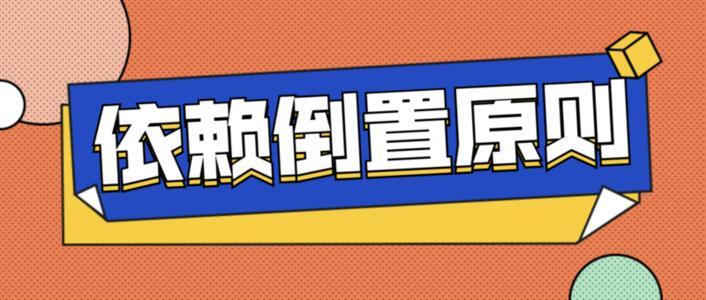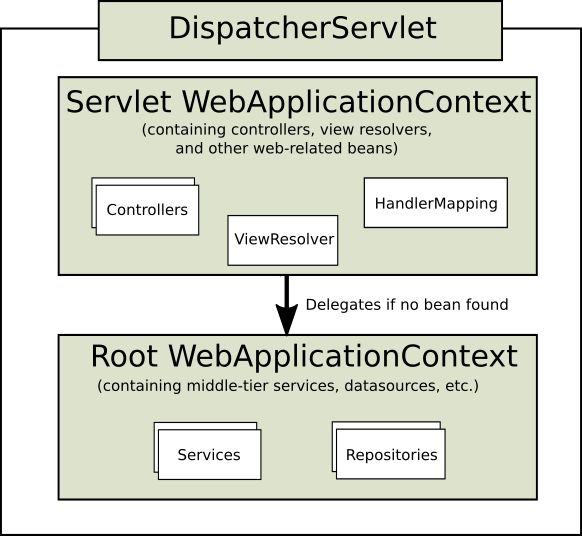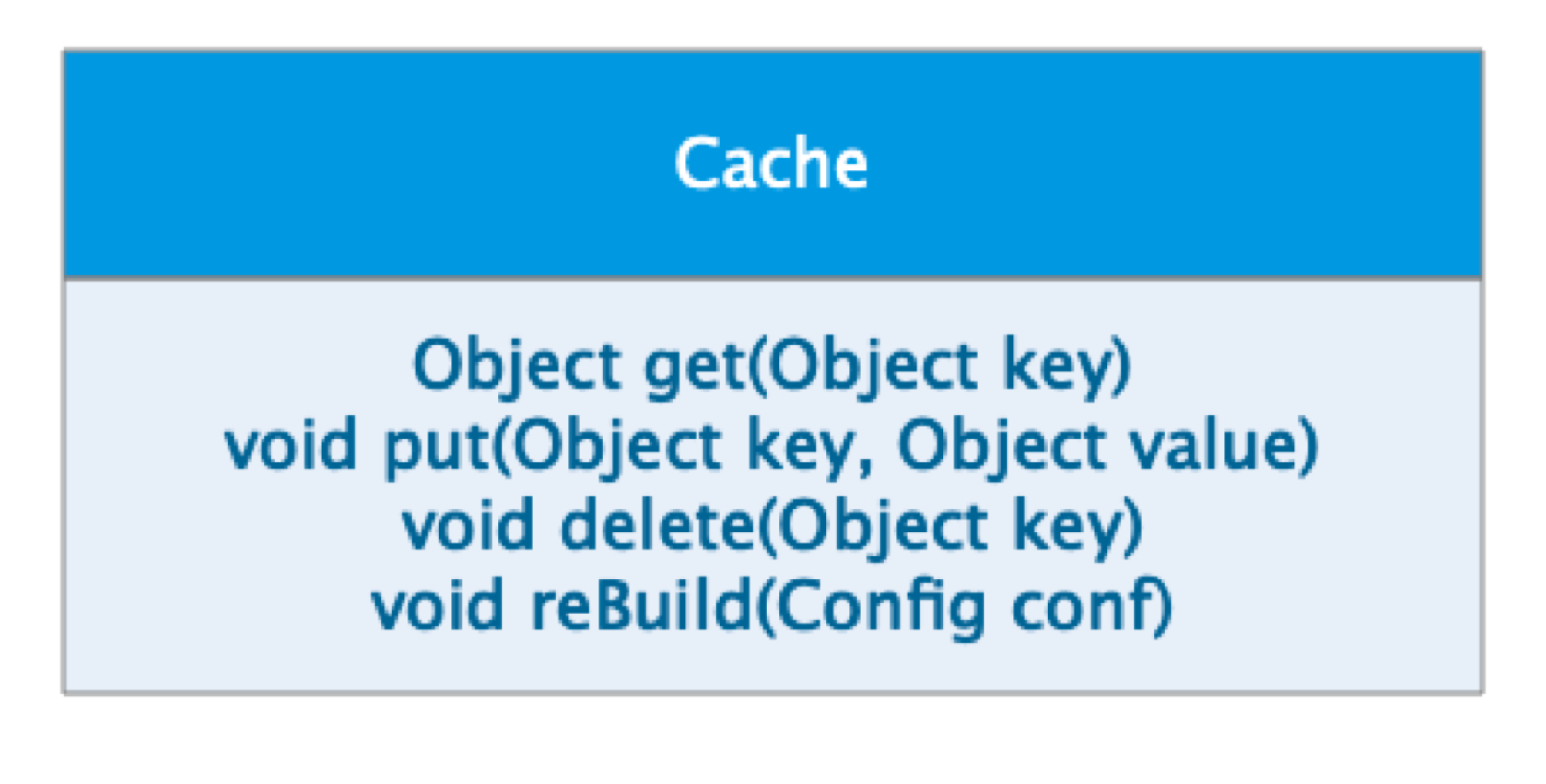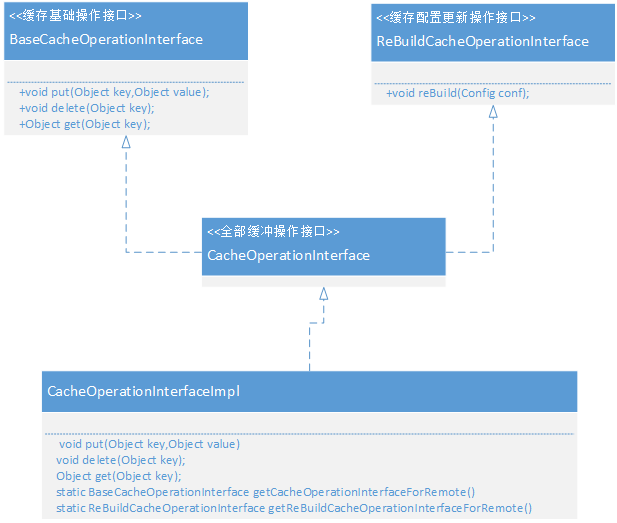Spring Web MVC 依赖倒置原则分析

依赖原则的基本概念(DIP)
DIP - Dependency Inversion Principle
高层模板块不能依赖低层模块,而大家都依赖于抽象
抽象不能依赖实现,而是实现依赖抽象
DIP - 倒置了什么?
模块或包的依赖关系
开发顺序和职责
软件的层次化
高层决定层
高层被重用
Spring MVC Context Hierarchy
Spring MVC 是封装了前端 controller 控制层的servlet框架。如图所展示Spring的 DispatchServlet 容器由含两个主要的模块组成 Servlet WebApplicationContext 和 Root WebApplicationContext。Servlet WebApplicationContext 作为 Root WebApplicationContext 的子集有着更加细分的职责。

那么依赖倒置的原则可以具体体现在如下几个方面:
以Servlet WebApplicationContext 中的Bean类型 HandlerMapping 为例,HandlerMapping 是一个高层抽象的接口声明,主要职责为request请求添加前置或后置拦截器功能。其最主要的两个底层实现 RequestMappingHandlerMapping 是对 @RequestMapping 方法注解声明的实现,SimpleUrlHandlerMapping 是对 URI 模式匹配的实现。 高层模块的实现无需依赖于低层模块,而低层实现依赖于高层 HandlerMapping 的抽象声明。
从模块和包的依赖关系和开发顺序和职责角度观察发现 WebApplicationContext 抽象接口声明属于包org.springframework.web.context 继承自 org.springframework.context 下的 ApplicationContext。低层的 WebApplicationContext 扩展了高层 ApplicationContext 的抽象声明。ApplicationContext 的职责属于更高一层的整个容器的抽象声明,WebApplicationContext 的职责则聚焦于 web 问题域内的抽象声明。在开发顺序来看如上面提到的 HandlerMapping 是针对不同低层问题的实现,在编码完成之后可以在不修改 WebApplicationContext 的前提下嵌入模块中使用。
从软件的层次化角度来看 WebApplicationContext 已经明确了整个模块的领域问题的抽象方向。Servlet WebApplicationContext(Servlet的实现) 继承 WebApplicationContext 的抽象声明并将实现的边界放在控制层,视图层。可以说是 WebApplicationContext 决定了 Servlet WebApplicationContext 的领域问题的大方向。如过需要扩展 web 领域其他问题可以重用 WebApplicationContext 产生一个新的 XXXX WebApplicationContext。
接口隔离原则设计缓存 Cache 工具类

将缓存工具类 Cache 进行改造按照接口隔离原则进行改造
提示:cache 实现类中有四个方法,其中 put get delete 方法是需要暴露给应用程序的,rebuild 方法是需要暴露给系统进行远程调用的。如果将 rebuild 暴露给应用程序,应用程序可能会错误调用 rebuild 方法,导致 cache 服务失效。按照接口隔离原则:不应该强迫客户程序依赖它们不需要的方法。也就是说,应该使 cache 类实现两个接口,一个接口包含 get put delete 暴露给应用程序,一个接口包含 rebuild 暴露给系统远程调用。从而实现接口隔离,使应用程序看不到 rebuild 方法。
类图设计如下:

Java 代码样例:
似乎感受到了设计原则在代码实现上的美
总结
1.依赖倒置原则是框架设计的最核心原则之一。主要作用降低了模块之间的耦合度,提高了高层的复用性和稳定性。高层面向抽象制定规则,低层面向抽象规则负责实现。底层的变动不会影响高层 !
2.接口隔离原则是让调用者只能访问它自己的方法,不能访问到不应该访问的方法。
版权声明: 本文为 InfoQ 作者【王鹏飞】的原创文章。
原文链接:【http://xie.infoq.cn/article/69f4921ef782a8717c866deda】。文章转载请联系作者。









评论